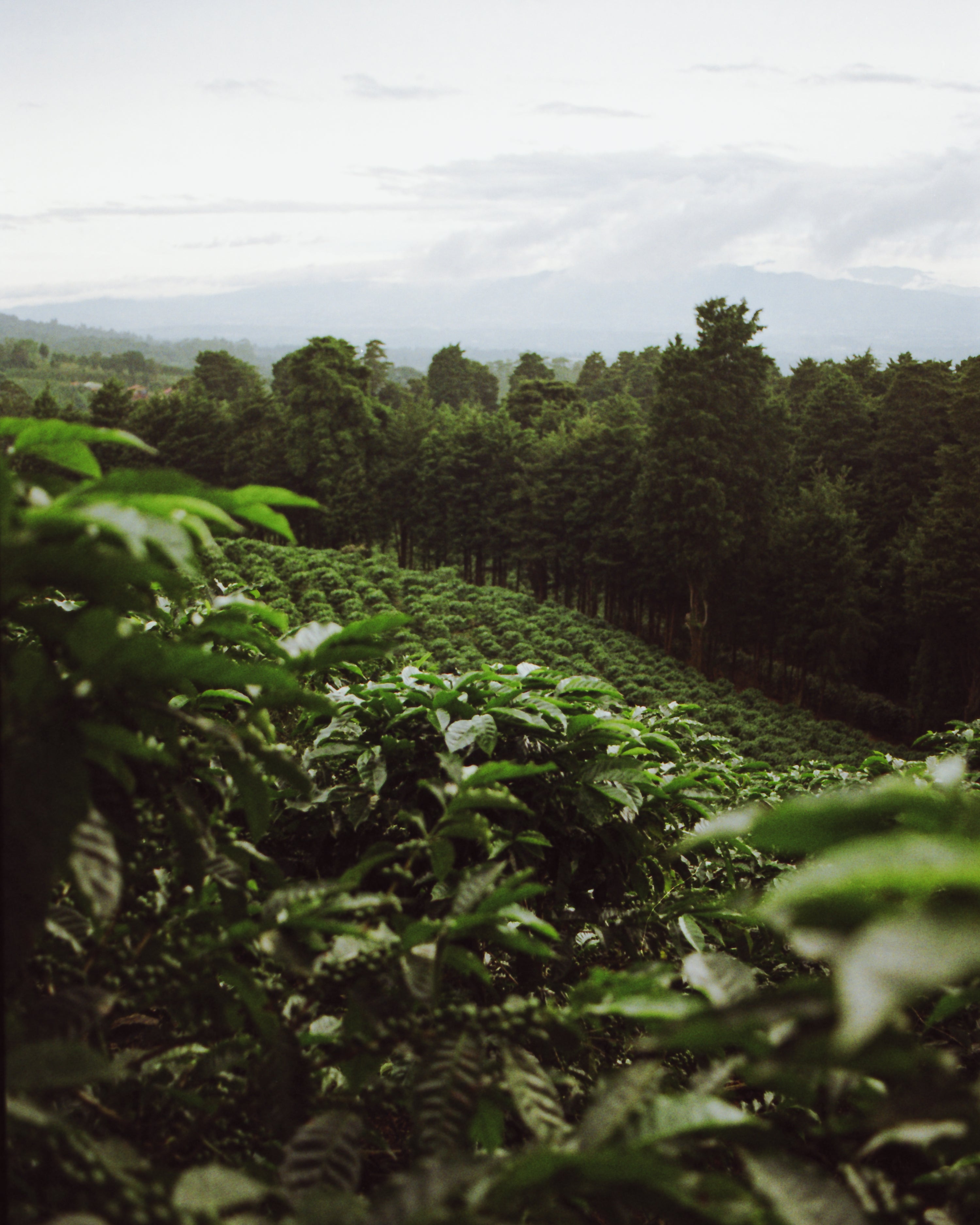
Practical Research at Volcán Azul
Recently, we were in Costa Rica to initiate some of our on-farm research activities with our partner Alejo Castro at Volcán Azul and to evaluate our collaborative efforts. While some of our newly developed techniques have proven very fruitful at the Research Station in the climate-controlled facilities in Denmark, we were very excited to see how they perform when implemented with Alejo on a larger scale and to start new, exciting projects for the coming season.
Visiting Costa Rica during the rainy season in July is a different experience compared to the peak of the harvest during the dry season in January. Intense rains require extensive maintenance and plant protection work in the fields. At the same time, seeds are starting to develop and need sufficient nutrients and conditions for proper cell filling and high quality. This is a crucial time in the phenological cycle of the coffee plant when significant alterations to the quality of the seeds can be made.

Optimised Precision Fertiliser Schedule – Foliar Nutrition
To better understand the needs of the plants at this crucial time, we started by taking soil and leaf samples for analysis in the laboratory. This gave us the opportunity to investigate how well the plants are thriving and if sufficient amounts of nutrients are available for the plants in the right proportions. See Journal on Soil Balances. Based on this, we developed optimized foliar fertilization strategies that supplement the base fertilizer scheme for each specific variety and its needs. Since many micronutrients (Zn, Mn, B, etc.) are not very mobile through the roots and within the plants, and N fertilizer is more efficiently applied directly on the leaves, we are focusing on foliar nutrition schedules to apply the nutrients directly where needed. To investigate the quality impact of precision fertilization at this stage, we have left a control area treated only with the ‘standard’ fertilizer base.

Pruning
At this moment of rapid growth, it was also a good time to evaluate the new pruning techniques that Alejo has been practicing for the last few years. The new pruning technique focuses on reducing growth at the tops of the trees to encourage the initiation of new, vital wood in the lower parts of the trees. For most varieties, many branches in the middle and bottom parts of the trees lose vitality and production after a few years. If the initiation of new wood only happens at the top, then production volumes will be compromised as the dimensions of the trees are not fully utilized. Additionally, the best quality is always produced on young, vital wood. Similar to our results at the Research Station, this has been a game-changer for the majority of varieties, resulting in more vigorous trees, higher production, and greater quality. These are only initial observations, though, and will be monitored over the next few years to investigate long- term viability. To investigate the quality impact of pruning, we have left a control area unpruned.

Crop Load Management - Thinning
With the basics of coffee cultivation, fertilization, and tree training planned and evaluated, we shifted our focus to an equally important factor: crop load management. Anticipating a year of high production for the introgressed and hybrid varieties, we quickly recognized the need for managing crop load to prevent biennial bearing and increase quality. To learn more about managing crop load and its importance, click here. The varieties that needed management were unsurprisingly H1, Obata, Caturra, and San Isidro - all vigorous varieties with strong bloom and fruit set. After establishing the production capacity of each variety by measuring leaf area and comparing it to the fruit load, we began thinning the trees manually by removing a set percentage of fruit for each variety. Typically, we removed around every fifth fruit, or 20%, focusing on the smallest fruitlets. However, we also wanted to test different removal percentages to observe the reactions of the different varieties to varying fruit loads under natural conditions. For each crop load treatment, we left a control area to investigate the quality impact. On a larger scale, manual removal is, of course, too labor-intensive. Therefore, we are working on implementing mechanical and chemical techniques to make thinning more effective and feasible on a larger scale.

Induced Shade
Coffee trees require adequate sunlight to produce photosynthates via photosynthesis, sustaining their vitality and productivity. However, excessive sunlight and heat can stress the trees, rendering them unproductive. Therefore, it's essential to strike a balance between sunlight and shade to promote both productivity and quality across different varieties, each with unique requirements. Additionally, tree age and yearly variations in fruit loads also determine the plants' need for both sunlight and shade. This underlines the importance of flexibility in the production system to manage shade effectively.
For this reason, we are testing the shading properties of kaolin clay formulated with an adjuvant, which can be utilized in different concentrations and sprayed directly on the leaves to simulate various levels of shade. This method allows us to provide the trees with optimal conditions to thrive, even under zero shade conditions. Initial trials have been very promising, increasing yields by 32-99% within a year of application and enhancing photosynthesis by an average of 71%. On this trip, we identified which plots and varieties would benefit the most from this treatment, planned the application, and are looking forward to seeing the results next year. Just as for the other trials, we are planning to leave a control area untreated to investigate the impact on quality.
All of our findings and research will be shared thoroughly through our media and featured as roasted coffee from our website. Thank you for reading.